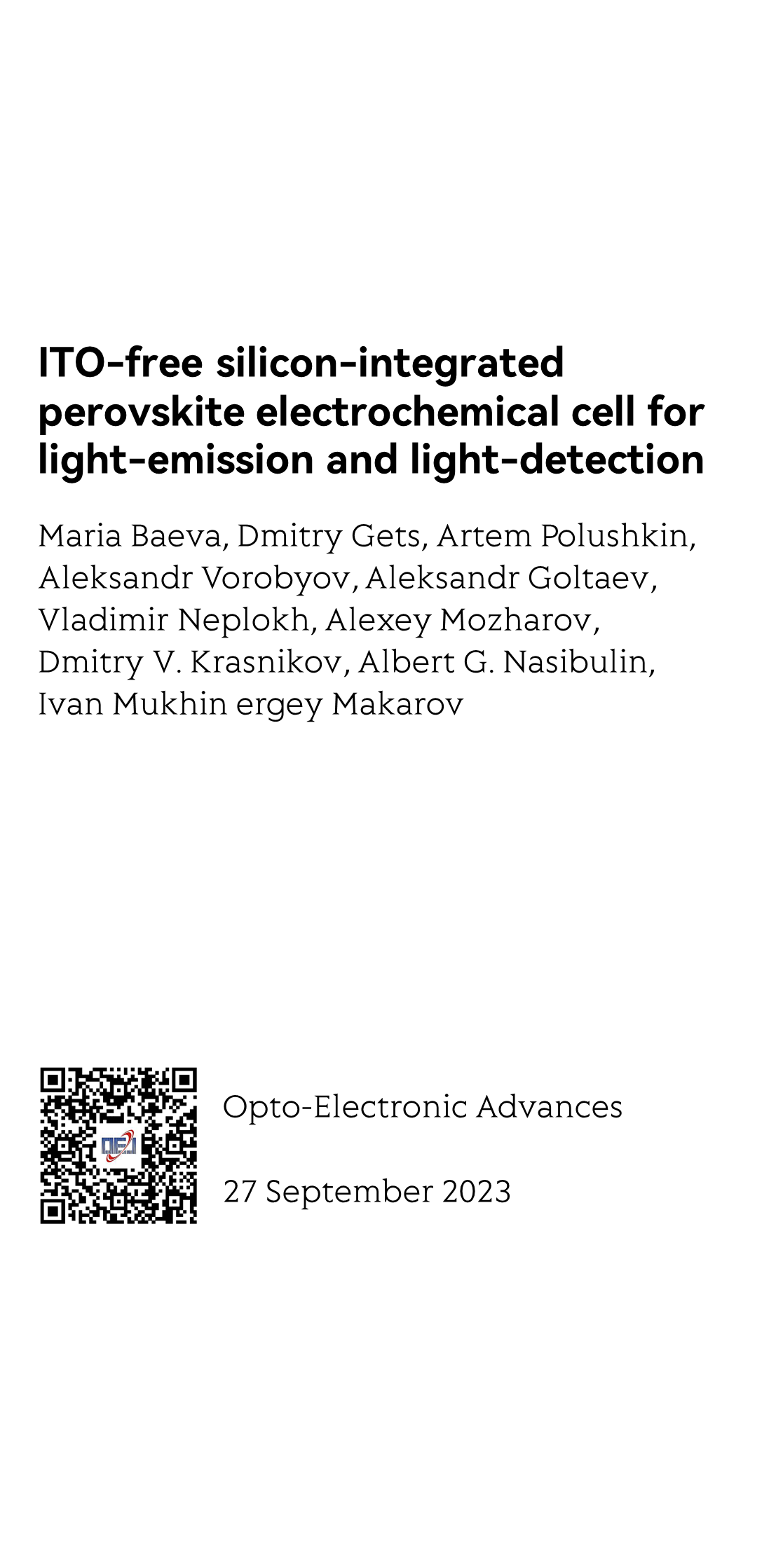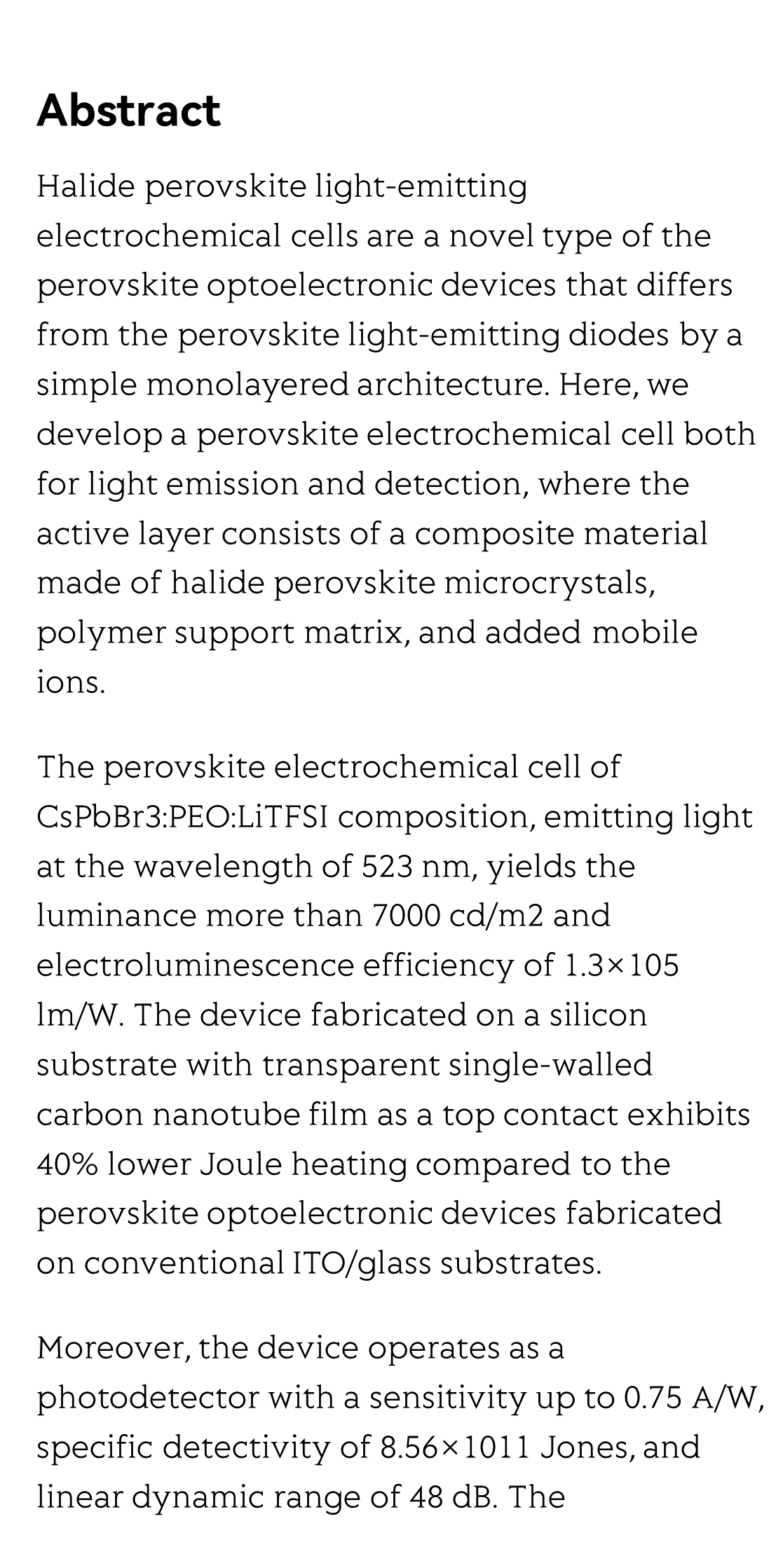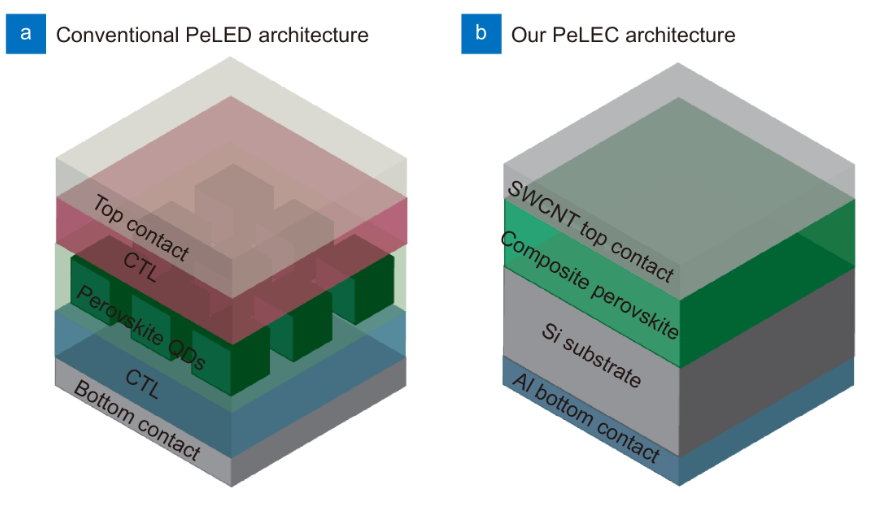(Peer-Reviewed) ITO-free silicon-integrated perovskite electrochemical cell for light-emission and light-detection
Maria Baeva ¹ ² ³, Dmitry Gets ², Artem Polushkin ², Aleksandr Vorobyov ¹, Aleksandr Goltaev ¹, Vladimir Neplokh ¹ ⁴, Alexey Mozharov ¹, Dmitry V. Krasnikov ⁵, Albert G. Nasibulin ⁵, Ivan Mukhin ¹ ⁴, Sergey Makarov ² ⁶
¹ Alferov University, Khlopina 8/3, St. Petersburg 194021, Russia
² Department of Physics and Engineering, ITMO University, Lomonosova 9, St. Petersburg 197101, Russia
³ Institute of Automation and Control Processes (IACP), Far Eastern Branch of Russian Academy of Sciences, Ulitsa Radio 5, Vladivostok 690041, Primorsky Krai, Russia
⁴ Peter the Great St. Petersburg Polytechnic University, Polytechnicheskaya 29, St. Petersburg 195251, Russia
⁵ Skolkovo Institute of Science and Technology, Nobel 3, Moscow 121205, Russia
⁶ Qingdao Innovation and Development Center, Harbin Engineering University, Qingdao 266000, China
中国 青岛 哈尔滨工程大学青岛创新发展基地
Opto-Electronic Advances, 2023-09-27
Abstract
Halide perovskite light-emitting electrochemical cells are a novel type of the perovskite optoelectronic devices that differs from the perovskite light-emitting diodes by a simple monolayered architecture. Here, we develop a perovskite electrochemical cell both for light emission and detection, where the active layer consists of a composite material made of halide perovskite microcrystals, polymer support matrix, and added mobile ions.
The perovskite electrochemical cell of CsPbBr3:PEO:LiTFSI composition, emitting light at the wavelength of 523 nm, yields the luminance more than 7000 cd/m2 and electroluminescence efficiency of 1.3×105 lm/W. The device fabricated on a silicon substrate with transparent single-walled carbon nanotube film as a top contact exhibits 40% lower Joule heating compared to the perovskite optoelectronic devices fabricated on conventional ITO/glass substrates.
Moreover, the device operates as a photodetector with a sensitivity up to 0.75 A/W, specific detectivity of 8.56×1011 Jones, and linear dynamic range of 48 dB. The technological potential of such a device is proven by demonstration of 24-pixel indicator display as well as by successful device miniaturization by creation of electroluminescent images with the smallest features less than 50 μm.
Flicker minimization in power-saving displays enabled by measurement of difference in flexoelectric coefficients and displacement-current in positive dielectric anisotropy liquid crystals
Junho Jung, HaYoung Jung, GyuRi Choi, HanByeol Park, Sun-Mi Park, Ki-Sun Kwon, Heui-Seok Jin, Dong-Jin Lee, Hoon Jeong, JeongKi Park, Byeong Koo Kim, Seung Hee Lee, MinSu Kim
Opto-Electronic Advances
2025-09-25
Dual-frequency angular-multiplexed fringe projection profilometry with deep learning: breaking hardware limits for ultra-high-speed 3D imaging
Wenwu Chen, Yifan Liu, Shijie Feng, Wei Yin, Jiaming Qian, Yixuan Li, Hang Zhang, Maciej Trusiak, Malgorzata Kujawinska, Qian Chen, Chao Zuo
Opto-Electronic Advances
2025-09-25







